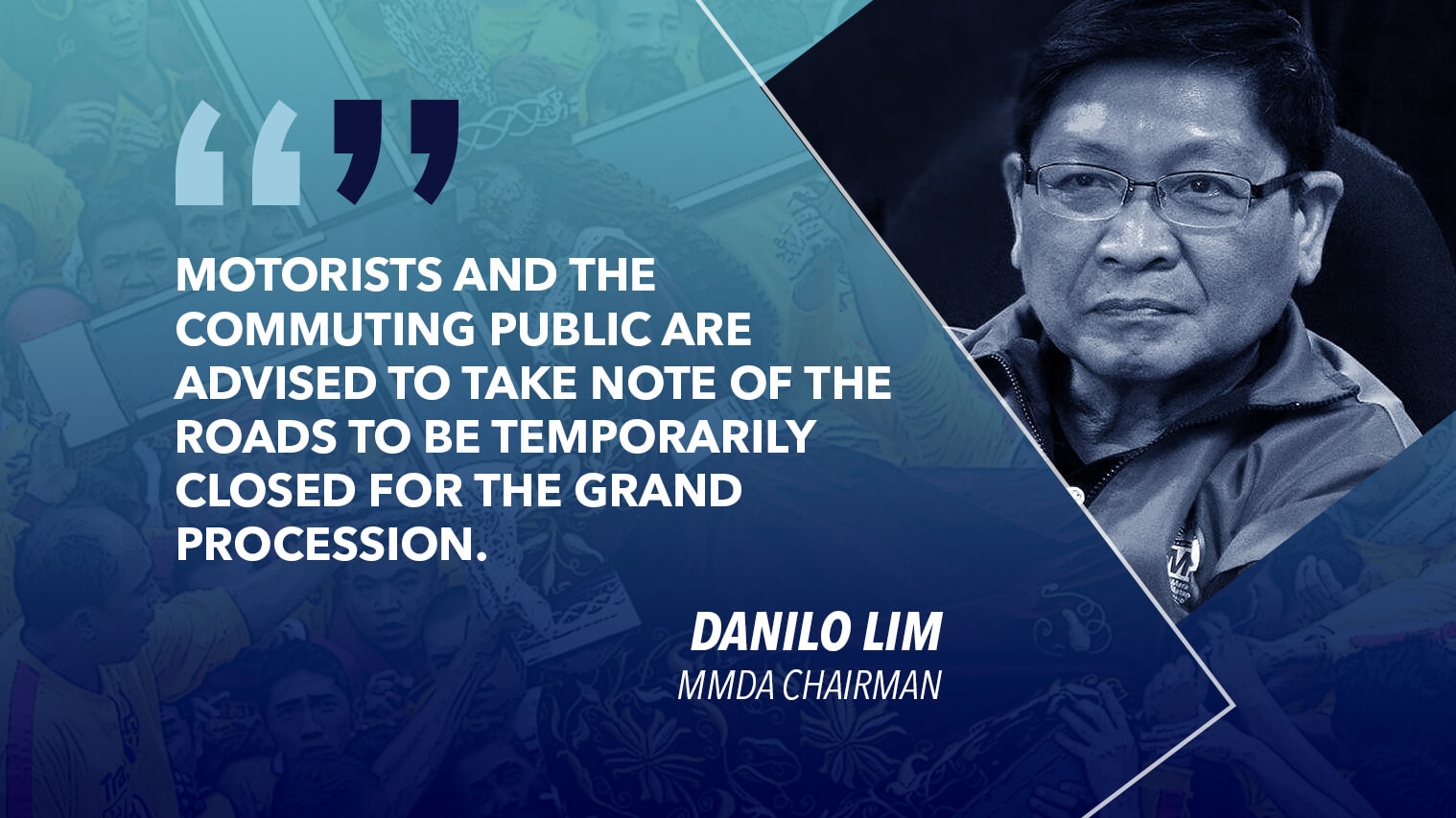The Metropolitan Manila Development Authority (MMDA) is all set to provide traffic and emergency assistance during the annual procession or Traslacion of the image of the Black Nazarene on January 9 which is expected to draw millions of devotees.
MMDA Chairman Danny Lim said 350 agency personnel will be deployed at the traditional “Pahalik” or kissing of the image at the Quirino Grandstand starting January 8.
For the Traslacion, 850 MMDA personnel will be positioned at the vicinity of the grandstand, at the Quiapo Church, and along the procession route to ensure the safety of the millions of devotees.
The deployed MMDA personnel will come from agency’s different units tapped to help the local government unit of Manila in maintaining peace and order during the Traslacion:
- The Western Traffic Enforcement Division shall be in-charge of managing traffic in the designated route of the procession and alternative route for motorists while the Road Safety Unit is tasked to install traffic cones and barriers at Luneta and processional route.
- The Sidewalk Clearing Group will provide crowd control personnel during the “Pahalik.”
- The Metro Parkway Clearing Group is tasked to manage road clearing of any form of obstruction particularly garbage at the Luneta Parade Ground and roads along the 5.9-kilometer procession route.
- “Street sweepers will immediately clear roads of all types of clutter,” said Lim.
- Emergency and medical assistance shall be rendered by the Road Emergency Group and Public Safety Division while monitoring and communication will be handled by the Metrobase.
“Emergency teams will be deployed at the grandstand and along the route of the procession to assist those who would be injured,” said Lim.
“Emergency teams will be deployed at the grandstand and along the route of the procession to assist those who would be injured.”
Ferry boats of the Pasig River Ferry Service meanwhile will also be placed on standby at Jones Bridge in Manila.
Traffic mobile patrols, ambulances, road emergency vehicles, mobile surveillance and communication units and other necessary equipment and vehicles will also be dispatched.
Meanwhile, Lim advised motorists and the commuting public to take note of the roads to be temporarily closed for the grand procession which will start at the Quirino Grandstand and will end at the Quiapo Church.
“Street sweepers will immediately clear roads of all types of clutter.”
The route of the Grand Procession of the Black Nazarene will be from the Quirino Grandstand to Katigbak Drive thru P. Burgos, left Taft Ave. thru Jones Bridge, right to Dasmarinas St., right to Plaza Sta. Cruz St; left Carlos Palanca St. under Quezon Bridge, left Quezon Blvd., right Arlegui St., right Fraternal St., right Vergara St., left Duque de Alba St., left Castillejos St., left Farnecio St., right Arlegui St., left Nepomuceno St. (counterflow), left Aguila St., right Carcer St., right Hidalgo thru Plaza del Carmen, left Bilibid Viejo thru Puyat, left Guzman St., right Hidalgo St., left Baustista (Barbosa) St., right Globo de Oro thru under Quezon Bridge, right Palanca St., right Villalobos thru Plaza Miranda to Quiapo Church.
The Metro Manila Disaster Risk Reduction and Management Council (MMDRRMC), which is also chaired by Lim, has asked the local government units of Metro Manila to also be ready to deploy additional manpower and resources for the religious festival.
The Manila City Disaster Risk Reduction and Management Council will serve as the lead first emergency responder through coordination and collaboration with the MMDRRMC.
“We expect around 13 to 15 million participants to join the procession since weather is predicted to be good that day,” said MMDRRMC Vice Chairman Romulo Cabantac Jr.


